

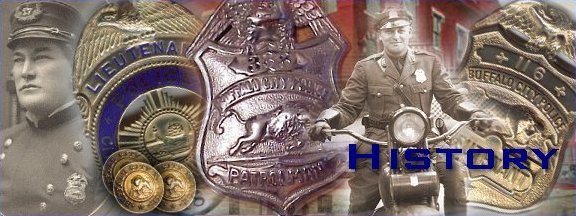
Buffalo Police Department History
By PO Cindy Diem, Lt Michael Kaska
|
On April 20th 1832, the village of Buffalo was abolished and the City of Buffalo was incorporated. From its inception the City of Buffalo has been the second largest city in the State of New York. Ebenezer Johnson was our city's first Mayor. At the time, Buffalo was comprised of five geographic areas which were known as "wards" The citizens of Buffalo relied upon three constables for personal protection as well as protection of their property. The opening of the Erie Canal in 1825 provided a way of hauling goods from the Atlantic Ocean to the Great Lakes for transportation westward, thus making the City of Buffalo a gateway to the west.
|
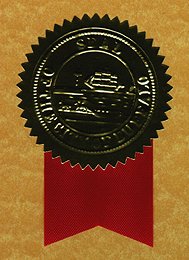 |
|
A demand for additional police protection became progressively more evident as Buffalo continued to grow. The citizens of the City of Buffalo became increasingly alarmed by the rowdy activities occurring each night in what was then known as the "Canal District". Mayor Johnson submitted a proposal to the Common Council on March 16th 1834, which described the urgent nee to establish a city watch. Finally on September 19th 1834, the Common Council passed a resolution that enabled the Mayor of the City of Buffalo to appoint Watchmen. In 1842, the first railroad entered the city when the Buffalo and Attica Railway was built. Though the force if watchmen had grown to a total of eight Watchman and one Captain by 1845, the demands for protection by the 20,000 residents of Buffalo were becoming increasingly more difficult to meet. Although his recommendation was denied, the Mayor had submitted a proposal to the Common Council, which called for doubling the size of the watch force, in order to adequately guard the city as its ever-growing population continued to climb.
|
|
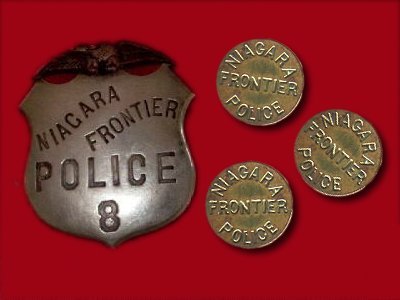 |
Niagara Frontier Police
In the 1860s an Act of the State Legislature created the Niagara Frontier Police District, which encompassed Buffalo and Tonawanda in Erie County and Wheatfield in Niagara County. Six to eight constables comprised the early membership of the Buffalo Police Department around the late 1830s. It was not until 1855 that the first police chief was appointed. Officers first received uniforms in the 1860s. During this period the State |
|
Legislature created the Niagara Frontier Police District, which encompassed Buffalo and Tonawanda in Erie County and Wheatfield in Niagara County. This new organization included a board of commissioners, a superintendent, captains, detectives, and over one hundred patrolmen. In 1870 the district was divided and the City of Buffalo has been served by a single police district ever since. Finally in 1866, an uniformed force known as the Niagara Frontier Police District was established by the New York State Legislature. David W Reynolds was Superintendent of the force that policed the entire Niagara Frontier, which at the time consisted of Buffalo, Tonawanda and Wheatfield. On April 26th 1871, a new law was enacted which call for the formation of the Buffalo City Police Department. The outlying areas were no longer included in the creation of the new police force. The City of Buffalo Police Department, as we know it today, had been established. Upon its inception, the Buffalo Police Department consisted of five precincts. By 1875, the population of the City of Buffalo had grown to 134,557. In 1875, the Morse Telegraph System was installed in the department, this technological achievement was a great asset in the advancement of our department's communication system. The Buffalo Police Department was continuing to grow and by 1884, Precincts 1 through 10 were in place. The strength of the force also continued to grow, it now consisted of 4 Captains, 6 Lieutenants and 240 Patrolman. |
|
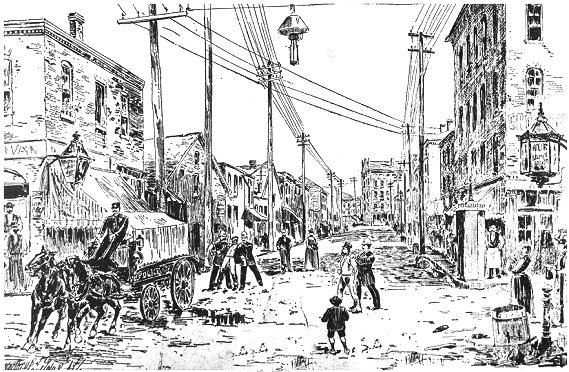
| The first horse drawn patrol wagon was placed into service in 1888, a call box system and patrol booths were installed throughout the city which significantly enhanced our communication system. |
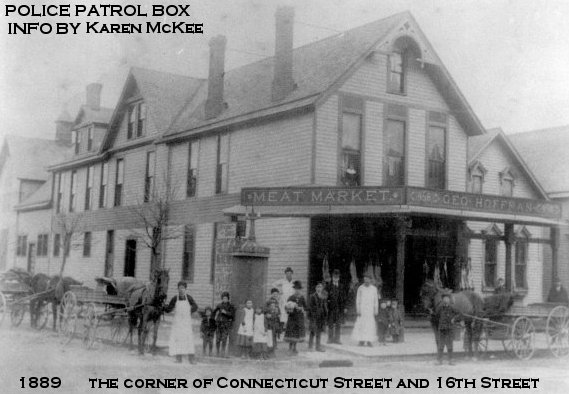
| To further our policing efforts in Buffalo, the first police patrol boat was launched in 1885. In the year 1899, the police boat was commissioned 245 days and on average patrolled 80 miles per day. The Department also had a Bicycle Squad of sixteen officers in place. |

|
According to the census figures of 1892, the population of the City of Buffalo had reached 267,567. As the end of the year 1899 approached, Mayor Diehl and the citizens of Buffalo prepared for not only a new year, but a new century. William S. Bull was the Superintendent of Police and Police Headquarters was located at the corner of Franklin and Seneca Streets. A captain commanded each of the departments thirteen precincts. |
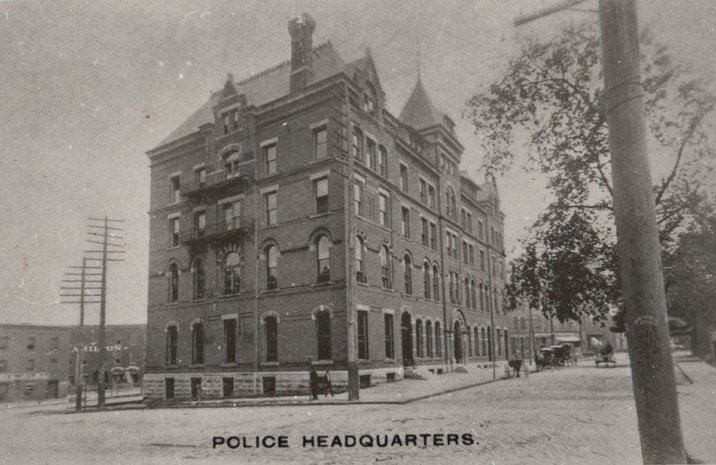
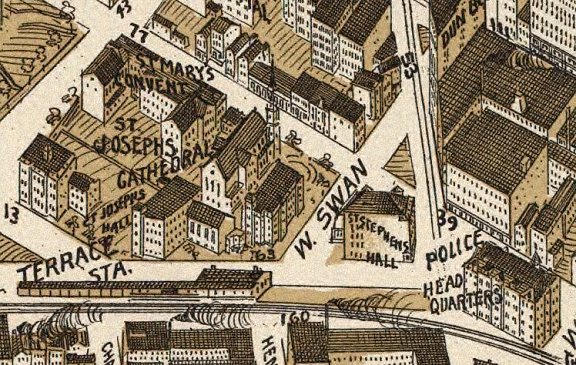
| A physically fit force was as important a concern in 1900,
as it is today. In a letter to the Honorable Board of Police
Commissioners dated January 2, 1900, Police Surgeon Joseph Fowler stated
that "the advantages of well directed physical training, as applied
to a police force, can not be over-estimated".
The City of Buffalo was preparing for the Pan-American Exhibition which was to be held in Buffalo in 1900. Due to the Spanish American war, the exhibition was postponed until 1901. As the City of Buffalo thrived and expanded, the Buffalo Police Department continued to grow. in 1908, Precinct 14 opened. Precinct 15 at South Park and Whitfield opened in 1924 followed by the opening of Precinct 16 on Bailey Avenue in 1925. Precinct17, the last precinct in the precinct system, was established at Colvin and Linden Avenues in 1927. The early part of the century also brought much technical advancement
to our police department. The first training school was organized in 1918. By the year 1920 the population in the City of Buffalo had risen to 506,775. |
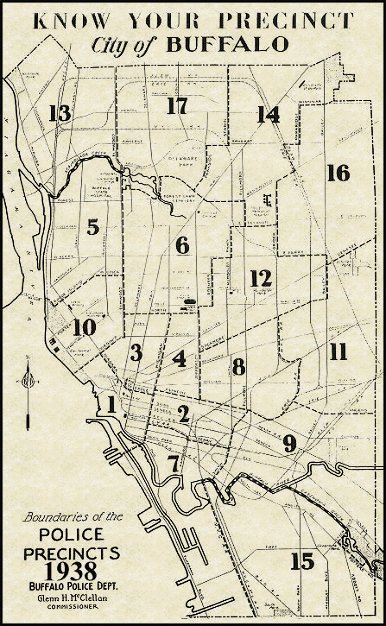 |
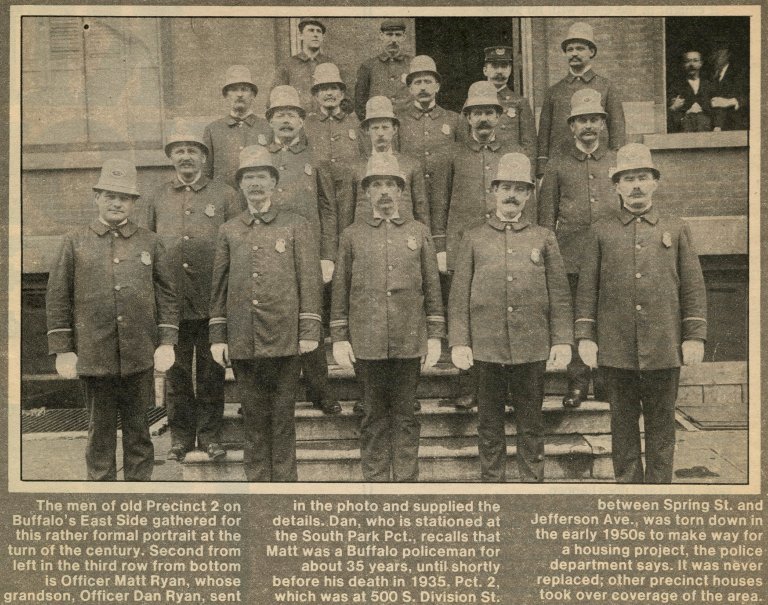
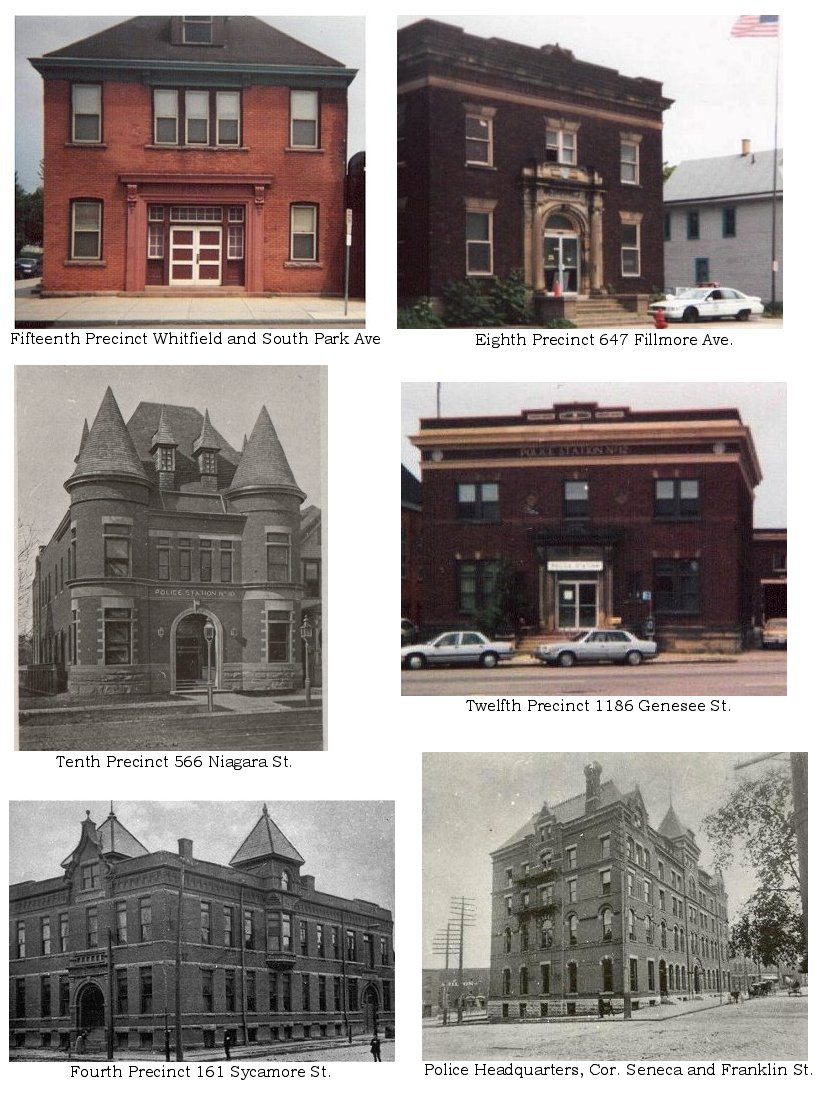
| The Buffalo Police Department Teamed up with WEBR Radio in February of
1928 to begin a trial radio broadcast. Due to the great success of the program, a month later, Police Commissioner James W.
Higgins began a daily broadcast, (except on Sundays) which spanned a 150 square mile area. Police Cheifs from "rural areas", Officials from neighboring towns and villages as well as citizens from various walks of life, tuned in to listen to what our Department had to say. Through this new found medium the Department met with overwhelming success in the locating of missing persons, stolen cars and even missing dogs. |
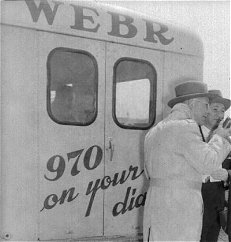 |
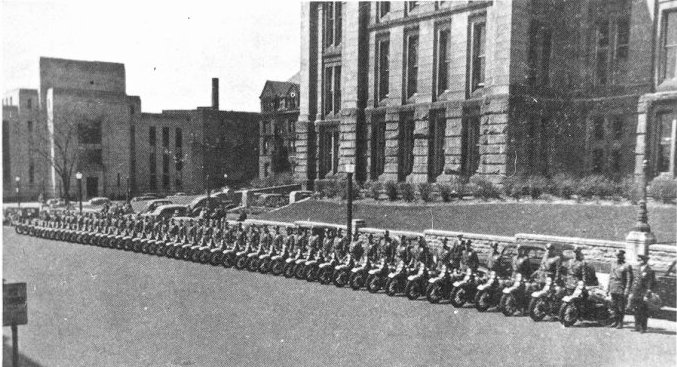
| Specialized squads such as our Motorcycle Unit and Mounted Units played an important role in police presence throughout the City. In 1930 we had 23 patrolman and 30 horses assigned to the Buffalo Police Department's Mounted Unit. |
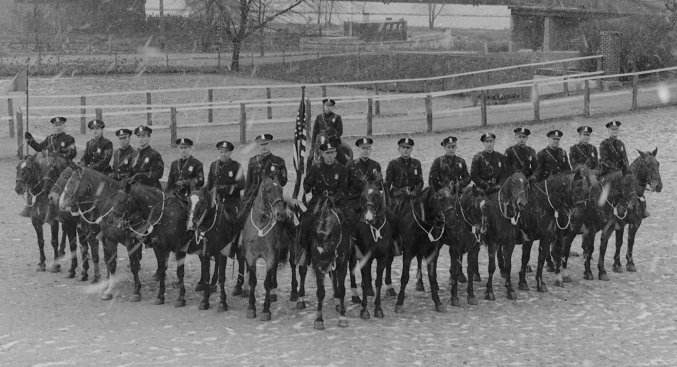

| A Teletype system enhanced the department's Communication process in 1929 and in 1931 the New York State Police Information Network (NYSPIN) telephone teleprinter system was installed at police headquarters. |
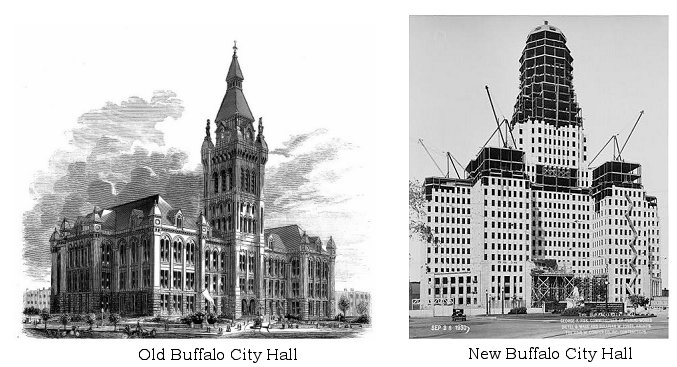
|
In 1932, Buffalo's new City Hall was built in an Art Deco architectural design, it was the largest "City Hall" anywhere in the world. A new police headquarters building was erected at the corner of Franklin and Church Streets in 1937 and still is the location the Buffalo Police Department calls "home". Population continued to soar in our City, by 1950 we had 580.132
residents. After the 1950's, population in the City began to decline with the
suburban sprawl beginning its early stages. The population of Precinct 2 was abolished in 1954 followed by the closing of Precinct 1 and Precinct 14 in 1961. |
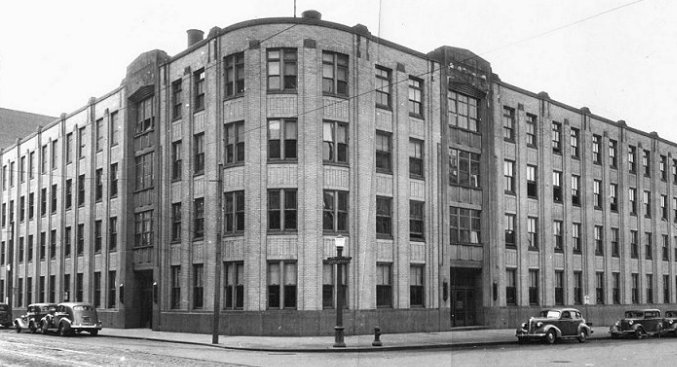
| A new police headquarters building was erected at the corner of Franklin and Church Streets in 1937 and still is the location the Buffalo Police Department calls "home". |
| As doors were shut on precincts throughout the City, the doors of technology and progress were opened. New types of equipment were introduced into numerous facets of police work. The City's first 911 System was installed in 1967, followed by a countywide Enhanced 911 System in 1988, and the implementation of Computer Aided Dispatch in 1993. In 1998, Mobile Computer Terminals (MCT's) were installed in patrol vehicles in conjunction with yet another new Computer Aided Dispatching System. |
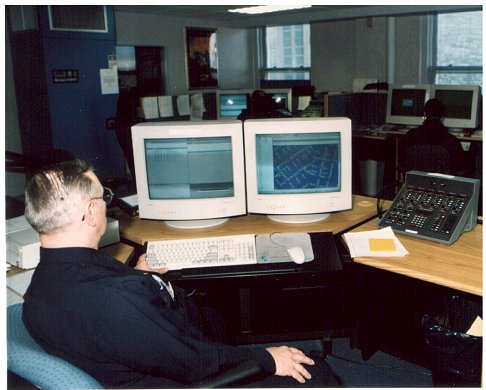
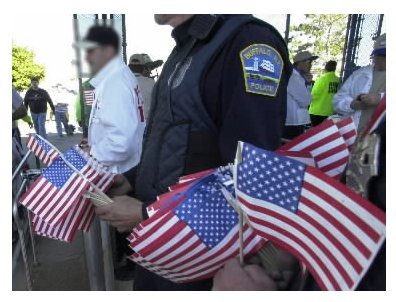
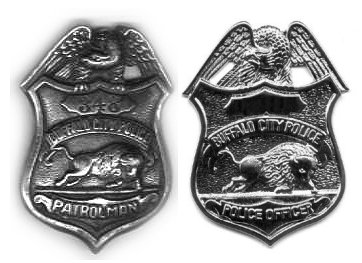
| In 1970's a police "patch was designed and it was
added to the left shoulder of each Buffalo Police uniform. In 1978 the
title "patrolman" was changed to "Police Officer".
All police badges were recall and badges with the new title were issued. Prior to 1977, only a very few civilians held positions with the Buffalo Police Department. In September of 1977, the position of Report Technician was established and civilians were hired by the Department to fill the newly created title. Today, the Buffalo Police Department employs over one hundred Report Technicians and numerous other civilians positions have been added to our staff. In 2003 the last Police Officer radio dispatcher retired, leaving an all civilian dispatch operation. A computerized Electronic Mail System was installed in the Department in December of 1989. The new system replaced our extremely antiquated teletype communication method. Within the last decade, some of the most dramatic changes have occurred within the Buffalo Police Department. We have gone from typewriter to computers and copy machines and have the capability of dispatching calls for police service over a voiceless computer system. Even the Police Officers were given a new look, in December of 1990 the Buffalo Police Department issued new uniforms. Light blue shirts, leather winter jackets, "Buffalo Coats" and "Ike Jackets" were all retired. The installation of a Department "Quarter Master" works to keep our Police Officers looking sharp in their dark blue shirts and dark blue pants that remain as the uniform of the day. In 1995 all of the cities fourteen precinct station houses were closed and five police districts were established. |
| Buffalo Police Then and Now, Buffalo Police History, Buffalo Police Department History, Buffalo, NY History, Buffalo History |